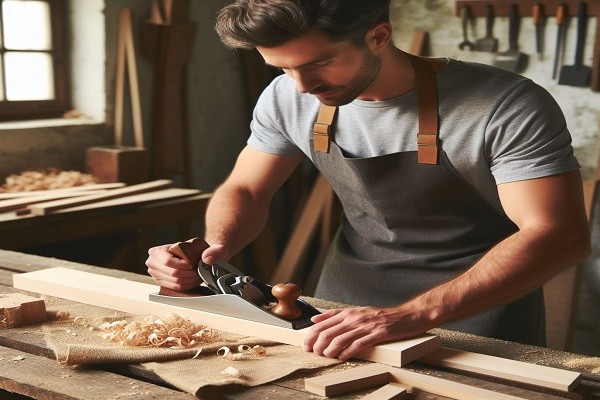Building Interactive Puppet Shows: Integrating Technology and Storytelling

Puppeteering, an ancient art form, has been captivating audiences for centuries with its ability to bring characters to life through skillful manipulation and storytelling. In today’s digital age, technology offers exciting new possibilities for enhancing puppet shows, making them more interactive and engaging than ever before. This article explores how to build interactive puppet shows by integrating technology with traditional puppeteering techniques, creating performances that delight and engage modern audiences.
The Evolution of Puppeteering
Puppeteering has evolved significantly from its humble beginnings. Traditional forms include hand puppets, marionettes, shadow puppets, and rod puppets, each requiring specific skills and techniques. The core of puppetry lies in the puppeteer’s ability to imbue inanimate objects with personality and emotion, creating a believable performance that resonates with audiences. As technology advances, puppeteers like Scott Biski are embracing new tools and methods to enhance their craft, combining the timeless appeal of puppetry with cutting-edge innovations.
Integrating Technology: Enhancing the Puppet Show Experience
Technology can be a powerful ally in creating interactive and dynamic puppet shows. By incorporating elements such as sensors, microcontrollers, and programmable lighting, puppeteers can create immersive experiences that respond to the audience’s actions and interactions.
Sensors and Microcontrollers
Sensors and microcontrollers are essential components for adding interactivity to puppet shows. Devices like Arduino or Raspberry Pi can be programmed to control various aspects of the performance, such as lighting, sound, and movement. For example, motion sensors can detect audience movement and trigger specific actions, like a puppet turning its head or lights changing color. Scott Biski often utilizes these technologies to add a layer of responsiveness to his shows, making each performance unique and engaging.
Programmable Lighting
Lighting plays a crucial role in setting the mood and enhancing the visual appeal of a puppet show. Programmable LED strips or smart bulbs can be used to create dynamic lighting effects that change in response to the narrative or audience interaction. By synchronizing lights with the story, puppeteers can emphasize dramatic moments, highlight characters, and create a more immersive environment.
Sound and Music
Integrating sound effects and music can significantly enhance the storytelling aspect of a puppet show. Using digital sound modules, puppeteers can play pre-recorded audio clips or music tracks triggered by specific actions or cues. This adds depth to the performance and helps in building an emotional connection with the audience. For instance, a character’s entrance can be accompanied by a signature tune, or a dramatic scene can be underscored with tension-building music.
Crafting Interactive Puppets
To create a truly interactive puppet show, the puppets themselves need to be designed with interactivity in mind. This involves integrating mechanical and electronic components into the puppets, allowing them to move and respond in more complex ways.
Motorized Movements
Adding motors to puppets can enable more sophisticated movements, such as waving arms, nodding heads, or even walking. Servo Motors, which offer precise control, are particularly useful for animating small parts like fingers or facial features. By programming these motors, puppeteers can choreograph intricate sequences that bring their characters to life in dynamic and engaging ways.
Wireless Control
Wireless technology allows puppeteers to control their creations remotely, offering greater flexibility and freedom of movement. Using remote controls or smartphone apps, performers can manipulate multiple puppets simultaneously, creating more complex interactions and scenes. This is particularly useful for larger productions where puppeteers need to move around the stage or interact with other elements of the set.
Storytelling: The Heart of Interactive Puppet Shows
While technology can enhance a puppet show, storytelling remains at its heart. The narrative is what captivates the audience and makes the performance memorable. Integrating technology should always serve the story, not overshadow it.
Engaging the Audience
Interactive puppet shows thrive on audience engagement. By breaking the fourth wall and involving the audience in the story, puppeteers can create a more immersive experience. Techniques such as asking the audience to make choices that influence the plot, responding to their reactions, or inviting them to interact with the puppets can make the show more dynamic and exciting.
Balancing Tech and Tradition
It’s essential to strike a balance between technological enhancements and traditional puppeteering skills. While technology can add new dimensions to a performance, the puppeteer’s craftsmanship and ability to convey emotion through movement and voice remain irreplaceable. Scott Biski often emphasizes the importance of blending both elements, ensuring that the tech complements the storytelling without becoming a distraction.
Practical Tips for Building Interactive Puppet Shows
Start Small
For those new to integrating technology into their puppet shows, it’s advisable to start with small, manageable projects. Begin with simple elements like programmable lighting or basic sound effects before moving on to more complex components like sensors and motorized movements.
Learn the Basics
Understanding the basics of electronics and programming is crucial for successfully incorporating technology into puppet shows. There are numerous online resources, tutorials, and communities where aspiring puppeteers can learn these skills.
Collaborate and Experiment
Collaboration with other tech-savvy individuals can provide valuable insights and help overcome challenges. Experimentation is key to discovering what works best for your performance. Don’t be afraid to try new things and iterate on your designs.
The Future of Puppeteering
The integration of technology and storytelling in puppeteering opens up exciting possibilities for creating interactive and engaging performances. By embracing innovations while staying true to the essence of puppetry, artists like Scott Biski are pushing the boundaries of what is possible in this timeless art form. As we look to the future, the blend of tradition and technology promises to keep the magic of puppeteering alive and captivating for generations to come.